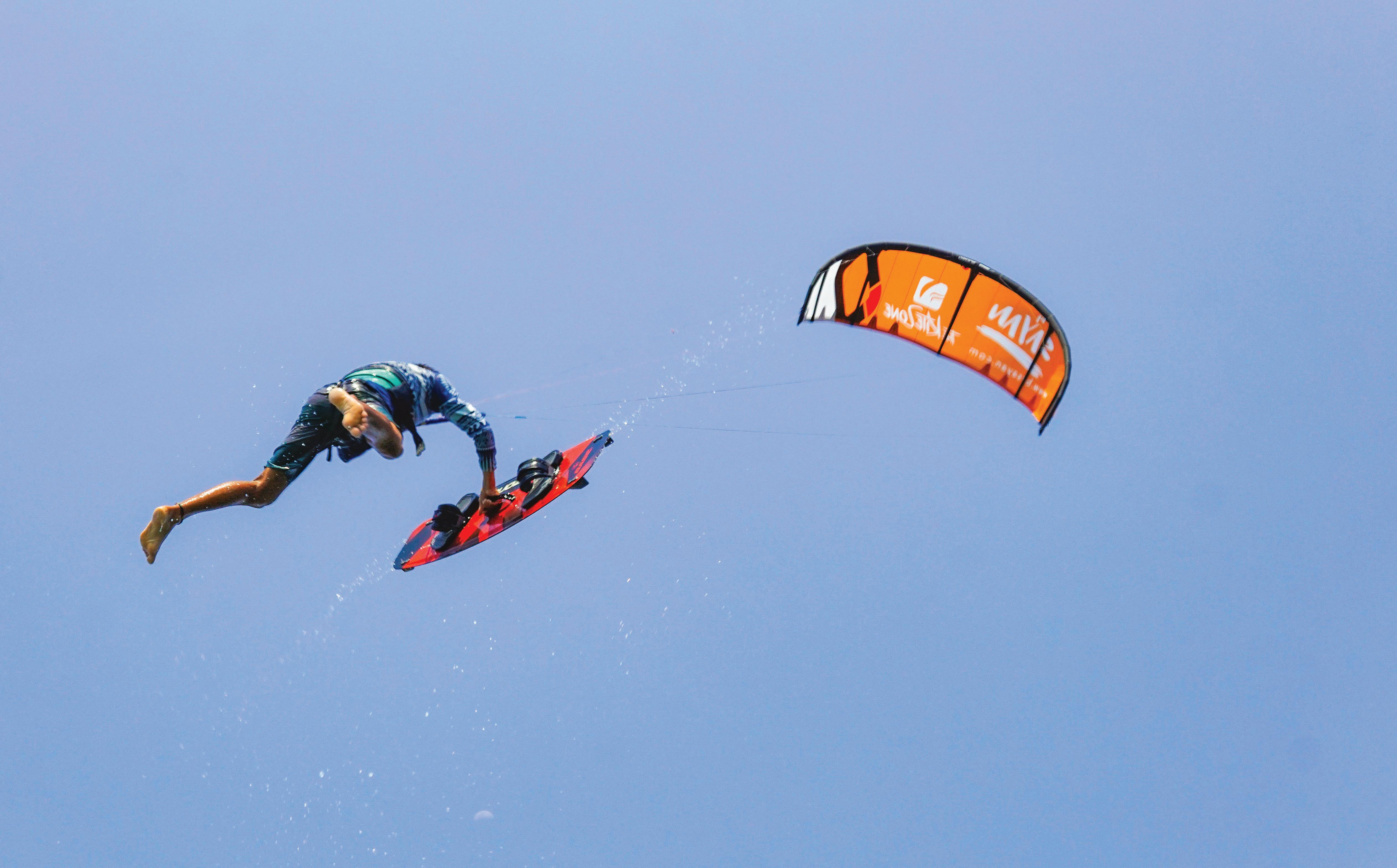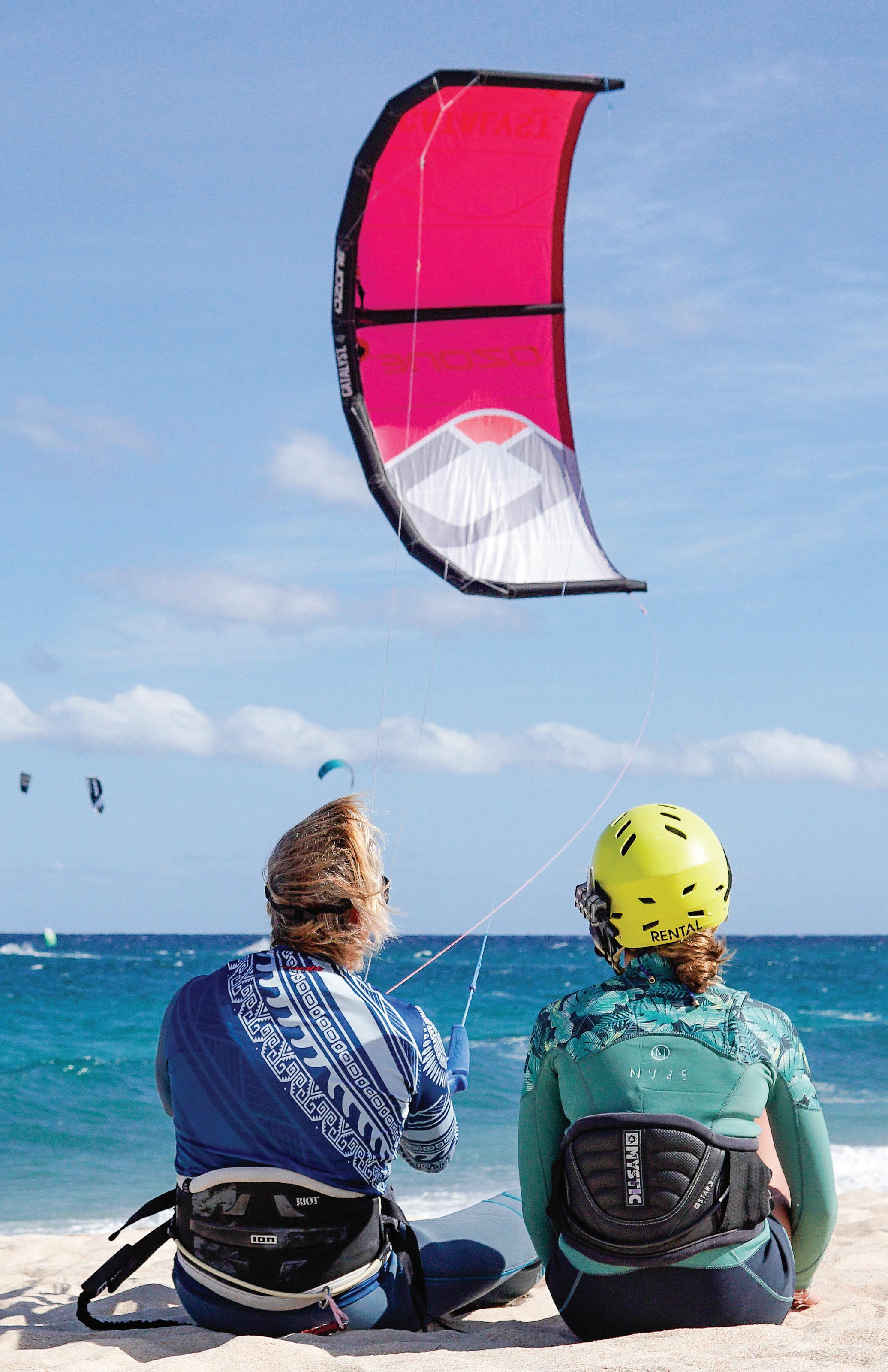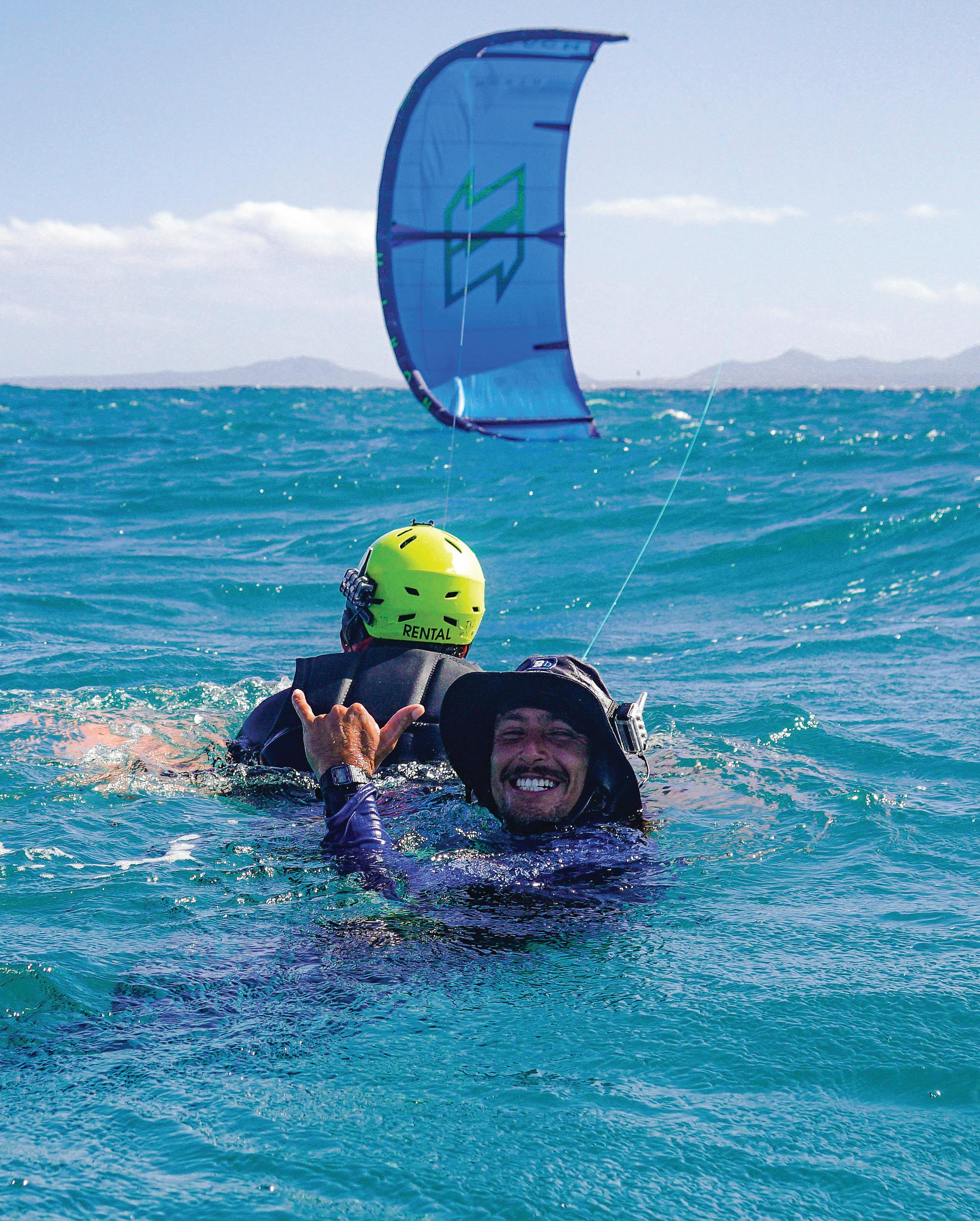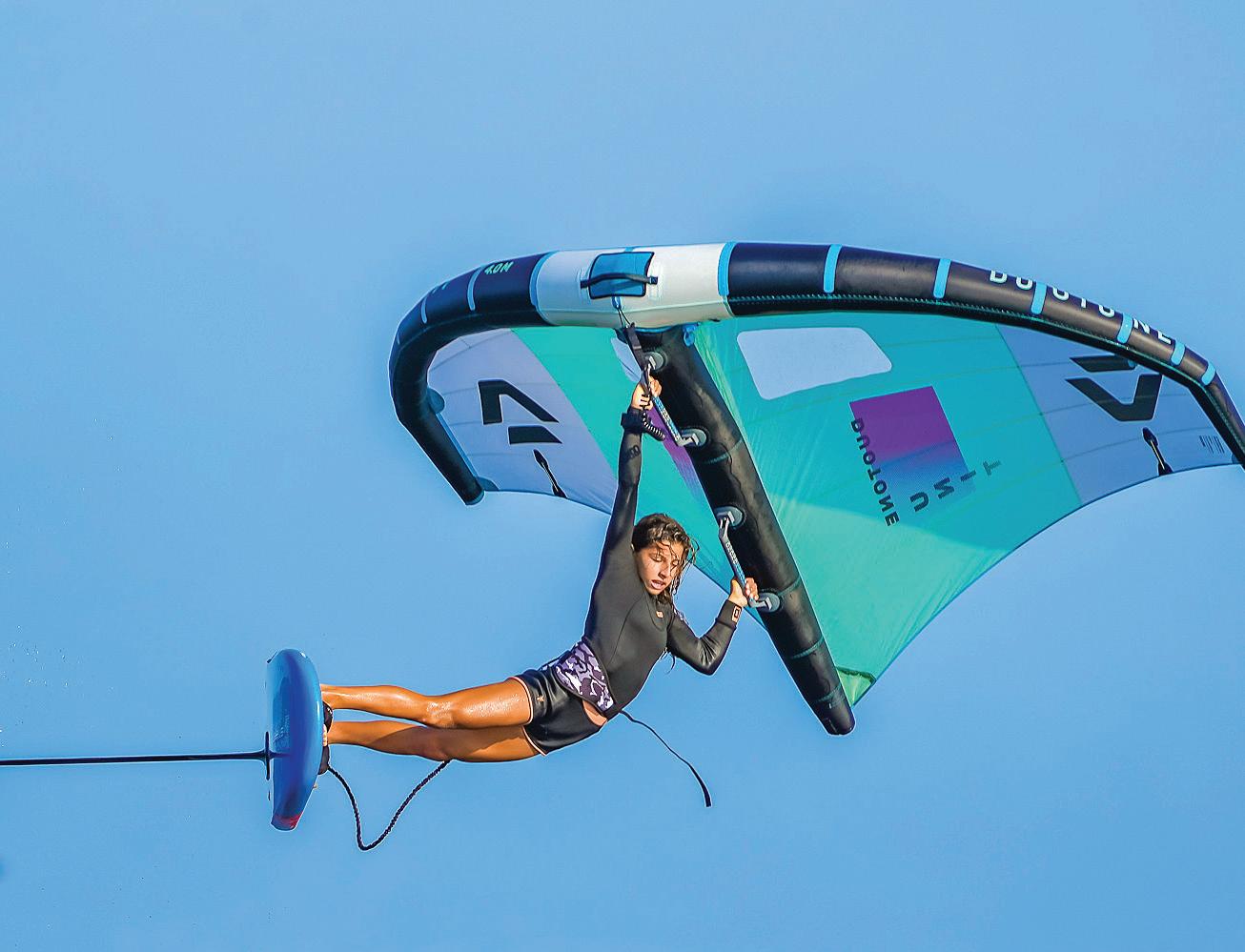
3 minute read
kiteSURF


The Kite Zone
In addition to having competed at a professional level and in four world competitions, Rogelio Basave is the founder of the Wind Festival, an international event that takes place annually during the month of May in Bucerías, Nayarit. Además de haber competido a nivel profesional y en cuatro mundiales de la especialidad, Rogelio Basave es el fundador del Festival del Viento, un evento anual de carácter internacional que se lleva a cabo durante el mes de mayo en Bucerías, Nayarit.
goals-objetivos
“Without a doubt, during the first session, the most important thing is to learn everything about safety and control of the kite in the water and then start practicing body dragging.” Depending on one’s abilities, a very talented beginner might be able to kite surf on their own within seven hours, which would be the equivalent of about three days of two-hour classes, plus one theory class. “However, the normal range for a beginner to start to really notice progress is about 10 to 15 hours.”
“Sin duda, durante la primera sesión, lo más importante es aprender todo lo concerniente a seguridad y control del kite dentro del agua. Enseguida es hacer body dragging”. Dependiendo de las habilidades de cada uno, un principiante con mucho talento podría hacer kitsurf por su cuenta en siete horas, que son tres días en clases de dos horas, más una de teoría. “Sin embargo, lo más normal es de 10 a 15 horas. La ventaja de este deporte es que uno solo se da cuenta de sus avances”.

“Wing foil is currently revolutionizing watersports with its innovation accompanied by the evolution of foil boards. Plus, it is versatile, fun, and much easier to learn than other activities at sea.” “El wing foil está revolucionando los deportes acuáticos, está en tendencia y su innovación va acompañada de la evolución de las tablas de foil. Además, es divertido, novedoso, versátil y mucho más fácil de aprender que otras actividades en el mar”. —Adam Finer, partner-owner of Surf Mexico.
Practically, wing foiling is a sport that combines a foil board with an inflatable wing, allowing you to take advantage of the wind and fly, an in between kitesurfing and eFoil.

Explained in more detail by Adam Finer, a wing foil lesson at Surf Mexico starts with an eFoil session. “Normally, we do 2 hours of instruction per day. The instructor will take you to the sand, where he will give a demonstration that takes around 15 minutes to show the parts of the machine, risk areas, where not to touch, how to lie down, how to kneel and finally how to stand up.”
Afterwards, with the assistance of the instructor, students get a chance to enter the water with their boards, lifejackets,
Prácticamente, el wing foil es un deporte que resulta de combinar una tabla de foil con un ala inflable, lo que permite tomar ventaja del viento para volar en cualquier lugar. Esta actividad se ubica entre el kitesurf y el eFoil
Explicada más a detalle por Adam Finer, una clase de wing foil en Surf Mexico inicia con una sesión de eFoil “Normalmente, hacemos 2 horas de instrucción por día. El instructor te lleva hacia la arena, donde dará un curso de unos 15 minutos para mostrar las partes de la máquina, las áreas de riesgo, dónde no tocar, cómo acostarse, cómo ir de rodillas y luego cómo ir parado”.
Enseguida, ambos entran al agua y cada uno trae su tabla, and protective helmets. “They board a boat that takes them far off the coast—where there is no risk of waves, rocks, or people swimming. From there, they begin to practice: first lying face down on the board, then a turn to the right and another to the left. Once this is mastered, the same routine is practiced again, but this time on their knees. Finally, with a little more practice, the last goal is holding a standing position for a period of between 30 seconds to a minute.” así como su chaleco salvavidas y casco de protección. “Abordan una lancha que los lleva lejos de la costa —donde no haya riesgo de gente nadando, olas o piedras—. Ahí comienzan a practicar: primero acostados boca abajo sobre la tabla, luego un giro a la derecha y otro a la izquierda. Enseguida, se hace este mismo proceso, pero ahora de rodillas. Después, ya con un poquito más de práctica e inercia, se trata de ponerse de pie. El primer objetivo de esa clase es que puedan estar parados por un lapso de entre 30 segundos y un minuto”.
The next day, the session begins with a stand-up paddle board, offering much more stability for standing. “We take the students far from the coast again, but this time the wing is taken so they can learn how to use the wind as a source of power.
Al día siguiente, la sesión inicia con una tabla de stand-up paddle, la cual ofrece mayor estabilidad para ponerse de pie fácilmente. “De la misma manera, alejados de la costa










